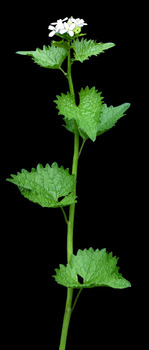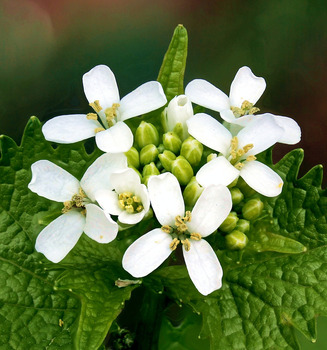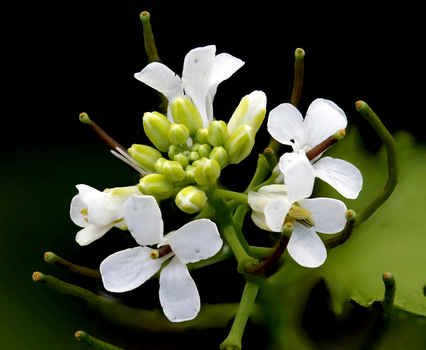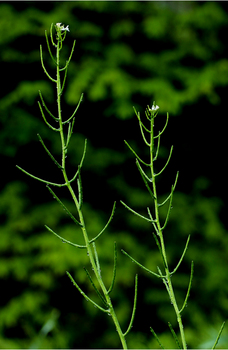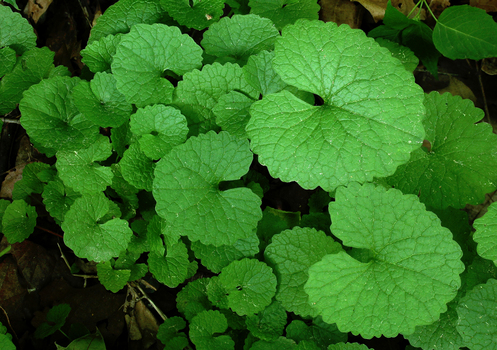Garlic Mustard
Classification:
Family: Brassicaceae, mustard family
Genus species: Alliaria officinalis
Leaves:
Garlic mustard is a biennial, requires two years to reach maturity. During the first year, plants form clumps of small rounded leaves. During the second year, plants have larger leaves that are heart-shaped or triangular with coarsely toothed edges.
Flowers:
Flowers are small, white, with four petals. Garlic mustard produces flowers during its second year of growth.
Fruit:
Fruit is a long slender pod, up to 2 inches long.
Seeds:
Seeds are small, shiny, black. One plant can produce hundreds of seeds.
Habitat:
Garlic mustard is shade-tolerant and grows well in disturbed areas.
Range:
Garlic mustard is an invasive non-native plant. It is native to Europe and was introduced to the United States in the late 1800s. Garlic mustard is aggressive and widespread. It suppresses native understory plants, including tree seedlings. Garlic mustard roots release allelopathic chemicals that are toxic to mycorrhizal fungi and roots of other plants.
More Information:
Garlic mustard is in the mustard family and is unrelated to garlic. The common name "Garlic Mustard" refers to the garlic-like odor produced by the leaves. The genus name Alliaria is from the Latin for "garlic-like." The species name officianalis is from the Latin for "of the apothecaries" or "official medicines sold in shops."
Photos:
